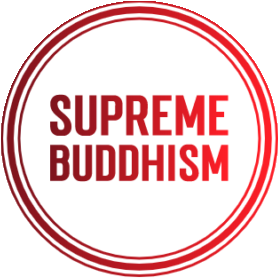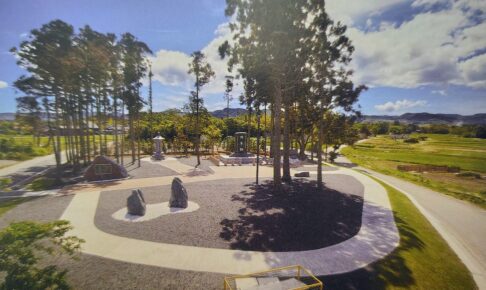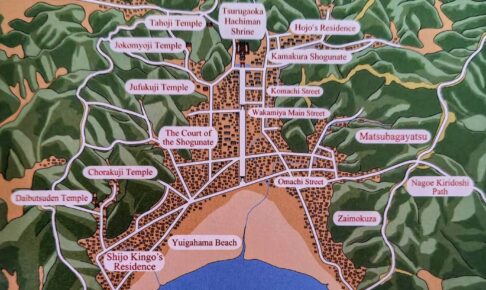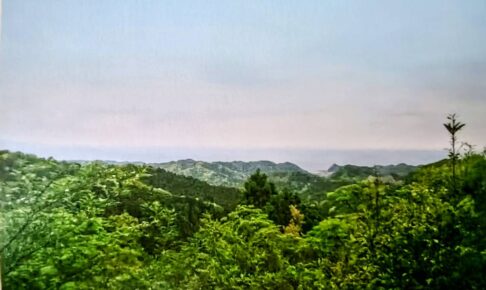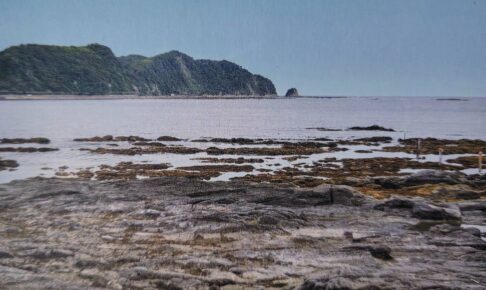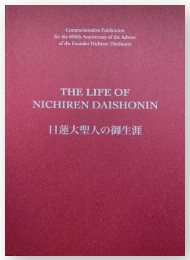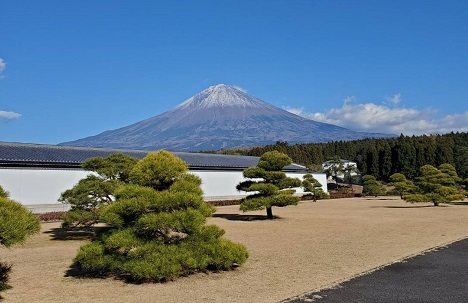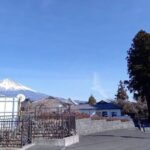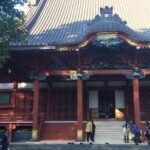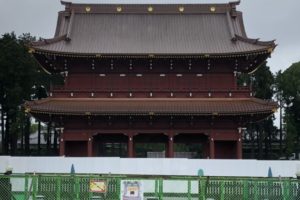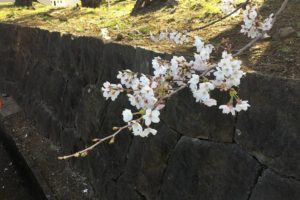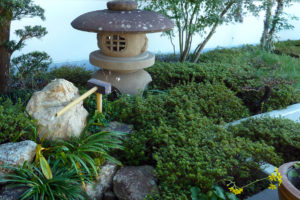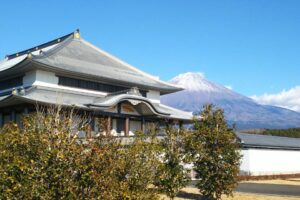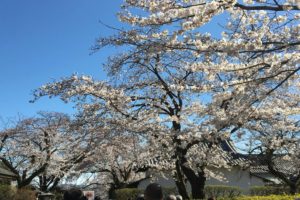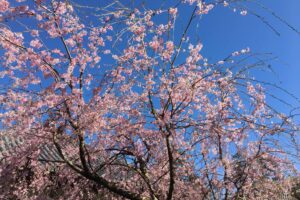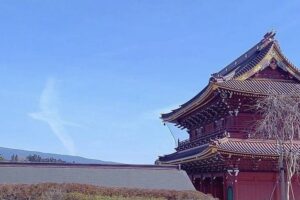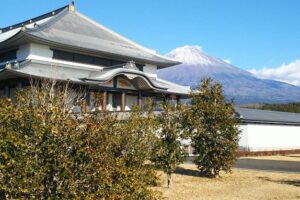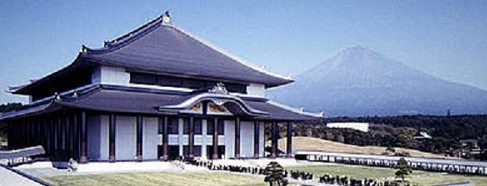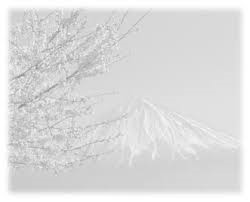Contents
(1) Introduction
This Gosho was written by Nichiren Daishonin on the 11th day of the 2nd month of the 9th of Bun’ei (1272), when he was 51 year years of age. The Daishonin was residing in Tsukahara in Sado at the time. He addressed the Gosho to Sairenbo Nichijo. Sairenbo had sent Nichiren Daishonin a query about the Heritage of the ultimate Law of life, and this topic came to be directly used in the title of the Gosho.
We, common mortals, are unable to escape the suffering of birth and death spanning the Three Existences of past, present, and future. Thus, it is a matter of supreme importance for us to be able to escape the suffering of birth and death and to attain enlightenment. The Heritage of the ultimate Law of life is the lifeblood Heritage that will enable us to grasp this ultimate significance.
(2) Background on Sairenbo
Nichiren Daishonin was exiled to Sado and arrived there on the 28th day of the 10th month of the 8th year of Bun’ei (1271), at the beginning of the coldest time of the winter season. The Sanmaido Hall in Tsukahara, where he was exiled, was truly a rundown shack. The Daishonin described it in his Gosho, “On the Buddha’s Behavior” (Shuju onfurumai Gosho). His life in Sado was full of severe difficulties, as he braved the cold, the starvation, and the constant threat of Nembutsu opponents who sought to take his life.
The Tsukahara debate took place under such conditions, on the 16th day of the 16th month of the following year. Nembutsu priests asked Lord Homma Rokuro to kill Nichiren Daishonin, but the lord instructed them instead to confront the Daishonin in a religious debate. Not only local Nembutsu priests from Sado, but priests from other regions also congregated to engage the Daishonin in this debate. Nichiren Daishonin systematically denounced and defeated them all. There were even some priests who admitted their defeat and discarded their Nembutsu prayer beads on the spot.
Sairenbo observed Nichiren Daishonin’s dignified demeanor and his systematic, logical argument. He realized that the Daishonin’s doctrine was, indeed, the correct teaching and that Nichiren Daishonin was none other than the master priest he had been searching for. There, he embraced True Buddhism. In addition to Sairenbo, several others (such as Abutsubo, Kou-nyudo, Ichinosawa-nyudo, and Nakaoki-nyudo) observed the incredibly great life condition of Nichiren Daishonin during his exile to Sado and determined to embrace True Buddhism.
Although Sairenbo had not been the Daishonin’s disciple for long, he had presented an important query about the Heritage of the ultimate Law of life, an essential, core principle of True Buddhism. This Gosho is the Daishonin’s meticulous response to this query.
In addition to this Gosho, Sairenbo received seven other essential writings,which include “The Entity of the Mystic Law” (Totaigi-sho), “The True Entity of Life” (Shoho jisso-sho), and “On Prayer” (Kito-sho). This shows that Sairenbo had strong faith, and possessed a profound understanding of Buddhist doctrine.
(3) Summary
Our High Priest Nikken Shonin explained in his sermon that this Gosho has a similar structure to that of other essential Goshos. It consists of three parts: the identification of the issue; the explanation; and the conclusion.
First, in the identification of the issue, the Daishonin stated that the Heritage of the ultimate Law of life represents the five characters of Myo-Ho-Ren-Ge-Kyo. It is the lifeblood Heritage of Myoho-Renge-Kyo of the Essential Teaching that was transferred from Bodhisattva Jogyo.
Next, the explanation is divided into six parts.
1. The Daishonin categorizes the two functions of birth and death into the principles of the Ten Worlds, Life and its Environment, and Body and Mind. He teaches that the essential entity of these is none other than Myoho-Renge-Kyo. The Mystic Law (Myoho) is, indeed, the fundamental and singular Law that characterizes the entirety of birth and death in the universe.
2. Based on the phrase, “Shakyamuni who attained enlightenment countless aeons ago, (and) the Lotus Sutra which leads all people to Buddhahood,” the Daishonin discusses the actual entity of the Gohonzon, which is characterized by the principles of the “Person is himself the Law, and the Law is itself the Person” and the “oneness of the Person and the Law.” He explains that the hearts of ordinary people, who believe in the Gohonzon and chant Nam-Myoho-Renge-Kyo, are essentially one with each other. Being truly enlightened to this fact is none other than to inherit the ultimate lifeblood of the Law of life and death.
3. In the passage that concerns the insight that “now is the last moment of his life,” the Daishonin explains that, for those who believe in the Lotus Sutra, numerous Buddhas will come to welcome them, without fail, at the moment of their death and that a life condition of great joy will open. However, those who do not believe in the Lotus Sutra will undoubtedly fall into Hell.
4. The Daishonin then discusses embracing “the Lotus Sutra by virtue of the strong ties (people have) formed with the teaching in their past existences.” This means that all individuals can bring forth a life condition of Buddhahood, without fail, if they never sever their ties with the Gohonzon through the cycles of life and death spanning the Three Existences. In other words, he teaches that embracing the Mystic Law is none other than the lifeblood heritage of life and death spanning past, present, and future.
5. The Daishonin explains propagation in the Latter Day of the Law from the standpoint of life and death. The propagation of the Great Law in the Latter Day of the Law is the Buddha’ s action to lead all humanity and to resolve this ultimate issue of life and death. He further explains that all disciples and believers – that is, all priests and lay believers – should chant Nam-Myoho-Renge-Kyo, with the spirit of different bodies but one mind (itai doshin); this is the transmission of the Heritage of the ultimate Law of life and death.
6. The Daishonin was deeply concerned about Sairenbo, who faced persecutions. He praises him for upholding pure faith, like pure gold (that cannot be burned, corroded, or swept away). He further describes the profound karmic bond that he shares with Sairenbo from the distant past.
Finally, in the conclusion, the Daishonin reveals his own position as the reincarnation of Bodhisattva Jogyo. He instructs Sairenbo to uphold the great power of faith based on the Heritage of the ultimate Law of life and to chant Nam-Myoho-Renge-Kyo. He admonishes that without this, it would be impossible to attain the lifeblood heritage of enlightenment characterized by the principles of earthly desires are
enlightenment (bonno soku bodai) and the sufferings of birth and death are nirvana (shoji soku nehan). The Daishonin concludes the Gosho with this final instruction:
Without the lifeblood of faith, it would be useless to embrace the Lotus Sutra. (Gosho, p. 515; MW-1, p. 25)
(4) The Heritage of the Law (Hottai no kechimyaku) and the Heritage of Faith (Shinjin no kechimyaku)
Nichiren Daishonin concludes this Gosho by stating, “without the lifeblood of faith, it would be useless to embrace the Lotus Sutra.” This means that even if one upholds the Lotus Sutra, without correct faith in Nichiren Shoshu, which has transmitted the correct teachings of Nichiren Daishonin, one’s efforts would be useless and he would be unable to attain enlightenment. This is what is meant by the Heritage of Faith. However, the Heritage of Faith is based on the Heritage of the Law, which is the primary foundation.
The Heritage of the Law refers to the continued transmission of the lifeblood Heritage to a single person. It is the process of specific transmission of the Entity of the Law of the Dai-Gohonzon of the High Sanctuary of True Buddhism. It was transferred from Nichiren Daishonin to Second High Priest Nikko Shonin, from Nikko Shonin to Nichimoku Shonin, and down through the successive generations of High Priests. It was transferred from Sixty-sixth High Priest, Nittatsu Shonin to our present, Sixty-seventh High Priest, Nikken Shonin. This transmission is accomplished when a master teacher singles out one disciple and transfers the Heritage. Thus, it is also known as the Transmission of the Heritage of the Master and Teachings (shishi sojo). With golden words and gold paper, the transmission is successively accomplished.
The Heritage of the Law, which is the transmission of the lifeblood Heritage to a single person, is the great foundation. The Heritage of Faith cannot exist if the Heritage of the Law is ignored.
However, the Soka Gakkai, which has deteriorated into a slanderous heretical sect, made the following statements:
The lifeblood Heritage of the Law in Nichiren Daishonin’s Buddhism was originally opened to all mankind. It is not something that should be monopolized by a select few…. The privileged and mystical sense of lifeblood transmission, which posits the idea that a High Priest unconditionally possesses the internal proof of the Heritage of the Law, is a heretical notion that destroys the true principle of the transmission through the Heritage of Faith.
(Daibyakurenge, 1997, October issue)
The Gakkai upholds such heretical principles and desperately denies the lifeblood Heritage of the Law. It has repeatedly asserted its “direct connection to the Daishonin,” the importance of “using the Gosho as the basis,” and that “only the Heritage of Faith is significant.” These are nothing more than desperate assertions made by the Gakkai after its excommunication from Nichiren Shoshu. Until recently, the following words were a part of a Gosho explanation published by the Soka Gakkai:
The lifeblood Heritage is a matter that the successive High Priests transfer based on the law of the lifeblood transmission of the Law to a single person. The Daishonin wrote in his Gosho, “The Essential Significance of the Lifelong Teachings of Shakyamuni” (Ichidai shogyo tai’i): “This teaching cannot exist without transmission.” In the “Exegesis on the ‘True Object of Worship'” (Kanjin no honzon sho-mondan), Nichikan Shonin wrote: “Thus, there are various forms of transmission presented in this writing. … The most profound principles, the essential tenets of Nichiren Shoshu represent the strict internal transmission (as that performed between the Daishonin to Nikko Shonin), and it is not known to all the followers.” In this way, we must rely on this transmission to understand the true spirit of the Daishonin. We must understand that we are able to uphold Nichiren Daishonin as the True Buddha and that we are able to correctly embrace the Three Great Secret Laws precisely due to the directions, virtues, and guidance, based on the lifeblood Heritage of the Law, which was transmitted from Nichiren Daishonin to Nikko Shonin, and to all the successive High Priests of the Head Temple Taisekiji.”
(Lectures on Nichiren Daishonin’s Gosho [Nichiren Daishonin Gosho kogil, Vol. 30)
This excerpt clearly shows how the Soka Gakkai, for sixty years until it was excommunicated, had been making correct assertions such as this, based on the guidance that it received from the successive High Priests. The assertions of today’s Soka Gakkai can be completely refuted by its own past statements.
(5) Conclusion
The Soka Gakkai is now a destructive organization that opposes True Buddhism. It has repeatedly launched slanderous attacks against High Priest Nikken Shonin, who possesses the lifeblood Heritage of the Law. The following passage from the “Heritage of the Ultimate Law of Life” (Shoji ichidai-ji kechimyaku-sho) now applies to this organization:
Those who disbelieve and slander the Lotus Sutra will “destroy the seeds for becoming a Buddha in this world.” Because they cut themselves off from the potential to attain enlightenment, they do not share the ultimate Heritage of Faith.
(Gosho, p. 514; MW-1, p. 23)
Those in the Soka Gakkai are unable to attain enlightenment. Regardless of how much “Daimoku” they chant and how vehemently they assert that they have a “direct connection to the Daishonin,” they will not receive a single benefit. The Gosho states:
Without the lifeblood of faith, it would be useless to embrace the Lotus Sutra. (Gosho, p. 515; MW-1, p. 25)
In fact, they will, without fail, descend
to Hell, as stated in the following passage from this Gosho:
(They will) find their hands firmly gripped by the guards of hell. (Gosho, p. 513; MW-1, p. 23) .
We, the Hokkeko believers throughout the world, must learn from this and increase our efforts to advance towards kosen-rufu, based on different bodies but one mind. The Daishonin states:
All disciples and believers of Nichiren should chant Nam-Myoho-Renge-Kyo with one mind, transcending all differences among themselves to become as inseparable as fish and the water in which they swim. This spiritual bond is the basis for the universal transmission of the ultimate law of life and death. Herein lies the true Goal of Nichiren’s propagation. When you are so united, even the great hope for kosen-rufu can be fulfilled without fail.
(Gosho, p. 514; MW-1, p. 23)
There are various organizations throughout the world with members who chant Nam-Myoho-Renge-Kyo. Examples of these are the Nichiren Shu sect, the Hokke sect, and the Rissho-kosei-kai. The believers of these sects chant slanderous Daimoku, which is completely unrelated to the lifeblood Heritage of the Law.
Enlightenment and true happiness can only be achieved by chanting the Daimoku performed by the priests and lay believers of Nichiren Shoshu, who base their faith on the Dai-Gohonzon of the High Sanctuary of True Buddhism and who believe in the lifeblood transmission of the Law to a single person. Based on this conviction, let us chant sincere Daimoku and redouble our shakubuku efforts.
